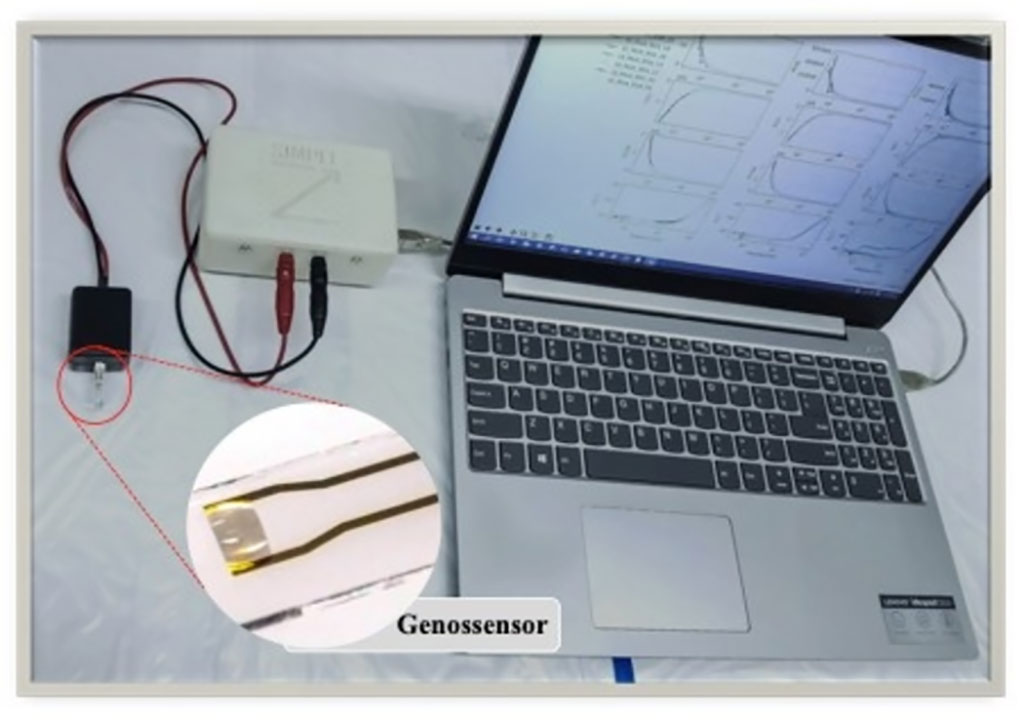Impedance Analyzer Connected to DNA Biosensor Enables Ultra-Fast and Cheap Detection of SARS-CoV-2
By LabMedica International staff writers
Posted on 17 Aug 2021
An impedance analyzer connected to DNA biosensor can be used to detect genetic sequence from SARS-CoV-2.Posted on 17 Aug 2021
A multidisciplinary team of researchers affiliated with various institutions and led by the University of São Paulo’s São Carlos Institute of Physics (IFSC-USP; São Paulo, Brazil) has developed the device which has already shown to be efficient in detecting SARS-CoV-2. The result of the analysis can be ready in 30 minutes, for a laboratory-scale cost of less than USD 1 per genosensor. The components of the impedance analyzer, a durable part of the device, cost less than USD 200. The device already exists at the laboratory scale, and the technology can be transferred to any company with the wherewithal to mass-produce it.

Image: Impedance analyzer connected to DNA biosensor that can be used to detect genetic sequence from SARS-CoV-2 (Photo courtesy of Lorenzo A. Buscaglia/IFSC-USP)
Based on nucleic acids that detect simple complementary DNA or RNA sequences, genosensors are biosensors that make possible mass testing for immediate and sensitive testing of genetic material. The device consists of a self-assembled monolayer of 11-mercaptoundecanoic acid (11-MUA) chemically bonded to glass electrodes containing micrometric gold leads or surfaces containing gold nanoparticles. This environment is able to immobilize the simple DNA or RNA strip used as a capture probe. Hybridization with the complementary strip, if it exists in the sample, is shown by means of variations in physical parameters detected by electrical or electrochemical impedance spectroscopy and localized surface plasmon resonance.
The highest sensitivity achieved in the study corresponded to 0.3 copies per microliter, sufficient to detect the DNA sequence in saliva or other body fluids. The complementary SARS-CoV-2 sequences were also diagnosed by means of machine learning techniques applied to scanning electron microscope images obtained from genosensors exposed to various different concentrations of complementary DNA sequences. In the detection experiments, the sensitivity of the genosensors was verified in control samples, including a negative sequence for SARS-CoV-2 and other DNA biomarkers unrelated to the virus. Analysis of the data obtained by a multidimensional projection technique called interactive document mapping (IDMAP) showed a clear separation between complementary DNA sequences at various concentrations and samples containing a non-complementary sequence or other DNA biomarkers unrelated to SARS-CoV-2.
“Our genosensor can immobilize a simple DNA strip used as a capture probe. Under appropriate conditions, the immobilized strip binds to a complementary DNA strip contained in the liquid sample to be analyzed. This process, called hybridization, demonstrates the presence of SARS-CoV-2 in the sample, which may be saliva or another body fluid,” said chemist Juliana Coatrini Soares who is the first author of the published article describing the research.
Related Links:
University of São Paulo’s São Carlos Institute of Physics













